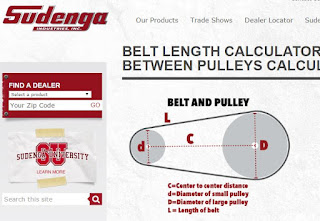Maybe you are thinking about putting up a bucket elevator and want to get some rough estimates on costs? Maybe you've gotten bids from several contractors to put up a bucket elevator, but the bids came back with different elevator heights? What should it cost to put up a bucket elevator? To answer these questions, first you need to know the answer to the question, "how tall should my bucket elevator be?"
The height of your bucket elevator is determined by three factors: Required spout angle. How far away do you need to spout? How tall is your highest discharge point?
You'll find that there are a lot of opinions about what is correct, and what you might "get away with" when it comes to spout angle. The safe rule of thumb is, dry grain typically flows reliably in a spout at an angle of 45° or more. High moisture grain, sunflowers and ground feed generally require spouts at a minimum angle of 60°.
You might hear some say, "you don't need to be at 45° with your leg spouts. You can get by with 43° or even 40°. Working within these shallower spout angles is a way for some to shorten the height of the leg they are bidding. Buyer beware! While you might save a couple bucks putting up the elevator leg that is the shortest, it is generally not the place to try and save money. Remember, if the bucket elevator you install is too short, it is very difficult (read:expensive) to fix later. If your material can't efficiently flow down your spouts at the rated capacity of the rest of the upstream system, you'll have to slow all the equipment down upstream. This obviously reduces your throughput and increases your unload time. In a particularly bad scenario, overfeeding a spout at too shallow of an angle can cause plugging of the bucket elevator. This is something people strive to only do once!
I think you get my point. Here is one of the easiest ways I know to calculate how tall your bucket elevator should be.
In the illustration below, assume the grain tank shown is the furthest point away from where you'd like to place your bucket elevator. For a 45° spout angle, dimension A and B must equal one another. For a 60° spout angle, dimension B should equal dimension A x 1.75. All other discharge points (closer to the leg) can generally be assumed to be at spout angles steeper than your shallowest spout angle.
Example for a 45° grain spout: The furthest point you want to spout to is 50 feet from where you want the base of the bucket elevator. The peak (spout discharge point) of your furthest grain tank is 30 feet tall. So, 30 feet (grain tank height) + 50 feet (dim A) = a leg discharge height of 80 feet. Keep in mind that you should plan to make the bucket elevator's discharge height slightly higher than that because typically you will have a grain distributor, or other spout connection accessories that bring the discharge point of the leg down a bit. A good rule of thumb is to plan for an extra 6 to 10 feet of discharge height on the leg, putting the leg in this example at a discharge height of 86 to 90 feet.
I hope this is somewhat clear and that you find this information helpful. Admittedly, this is a very involved topic that often needs to factor in site specific information. Hopefully, I've kept you moving in the planning process of improving your grain handling system. If in doubt, I always encourage people to find a respected millwright or agricultural contractor that 1.can provide solid references and 2. you can get along with. They'll be able to come out to your site, take measurements and draw your system to scale to give you a lot of this information.
Got questions about spout length? I've posted a drawing and the formula for how to calculate that here.
Size matters when it comes to your leg spouts. For a handy chart concerning what to expect for capacity through different sizes and diameters of grain spouts, click here.

